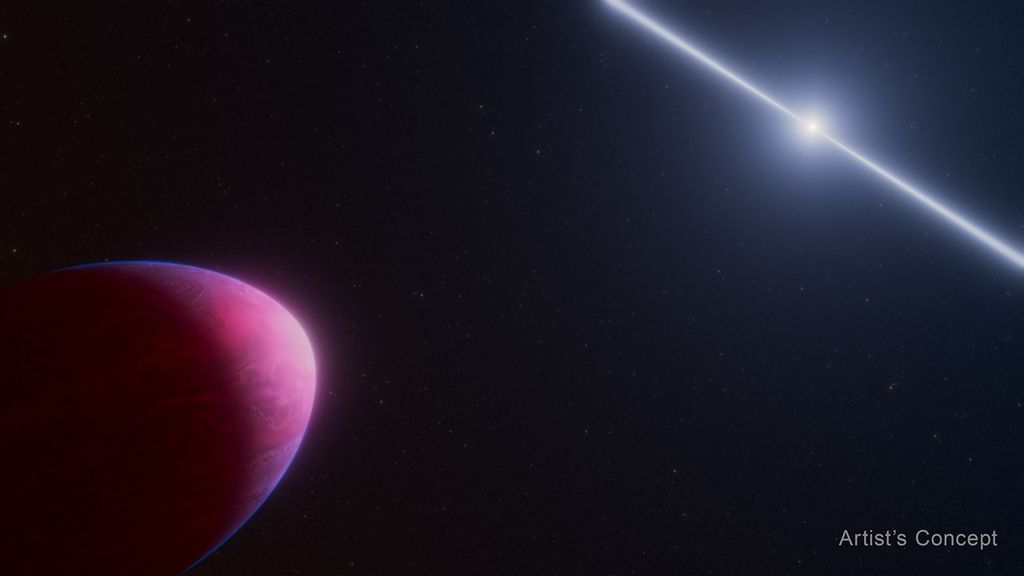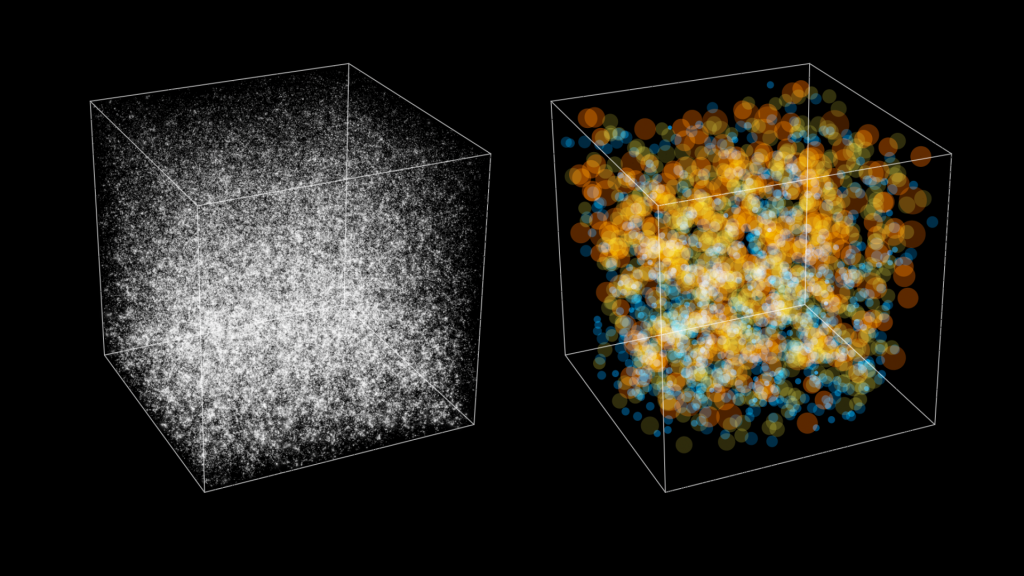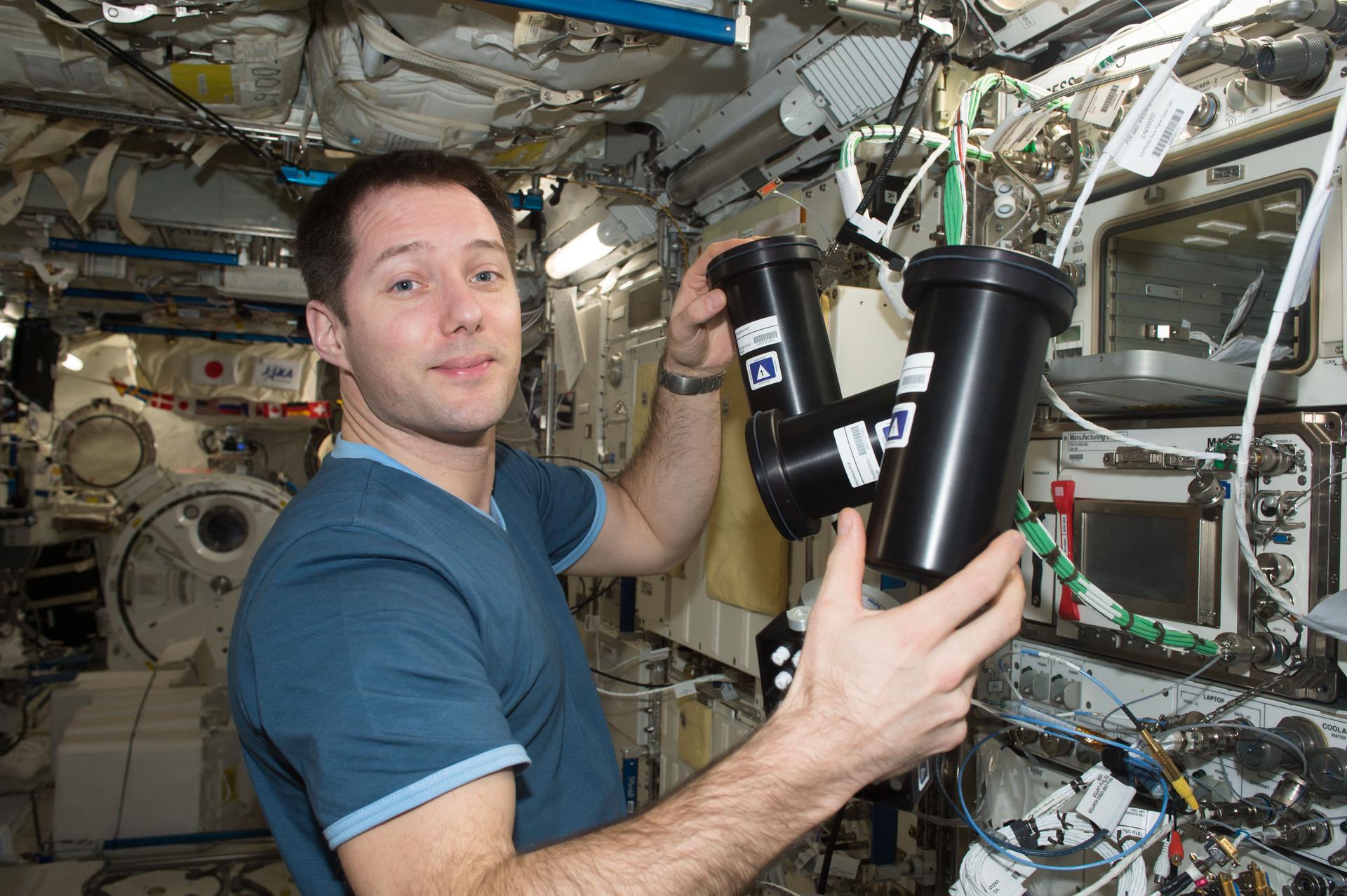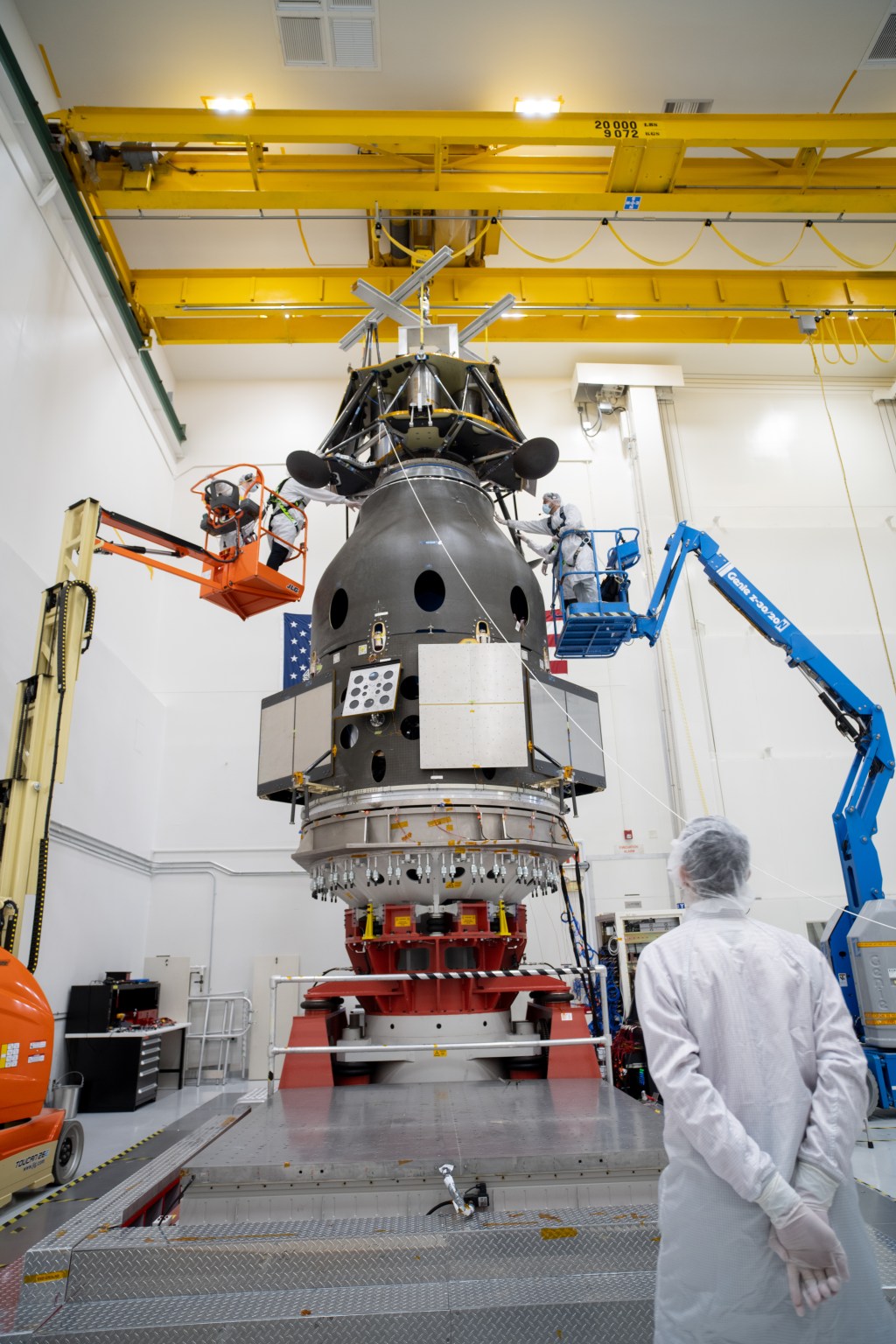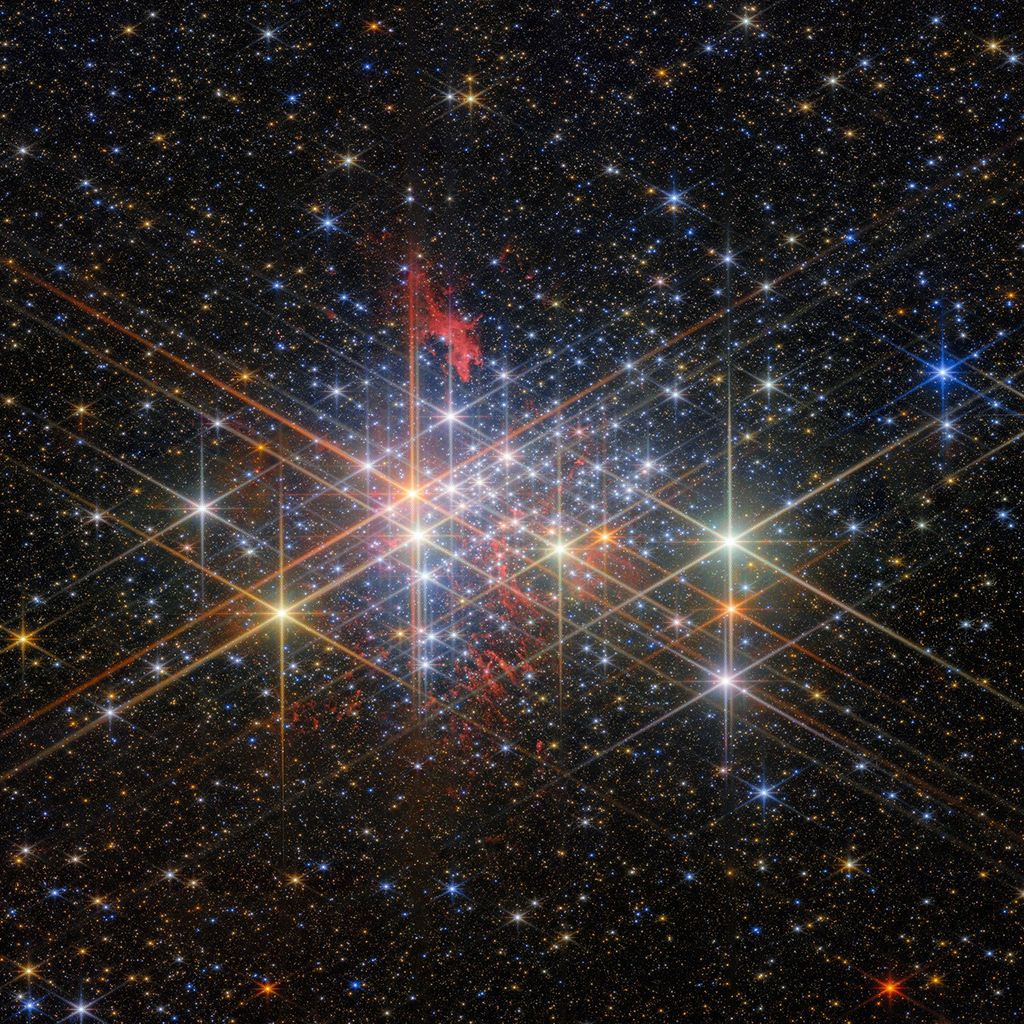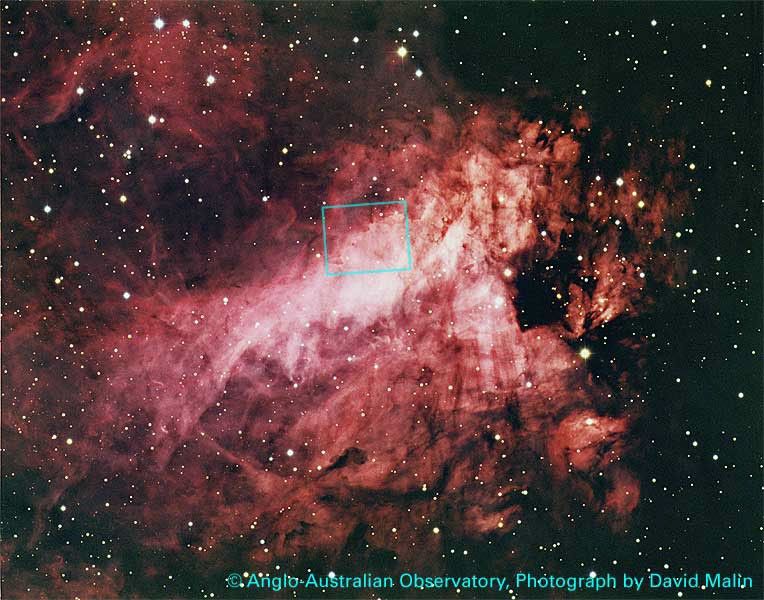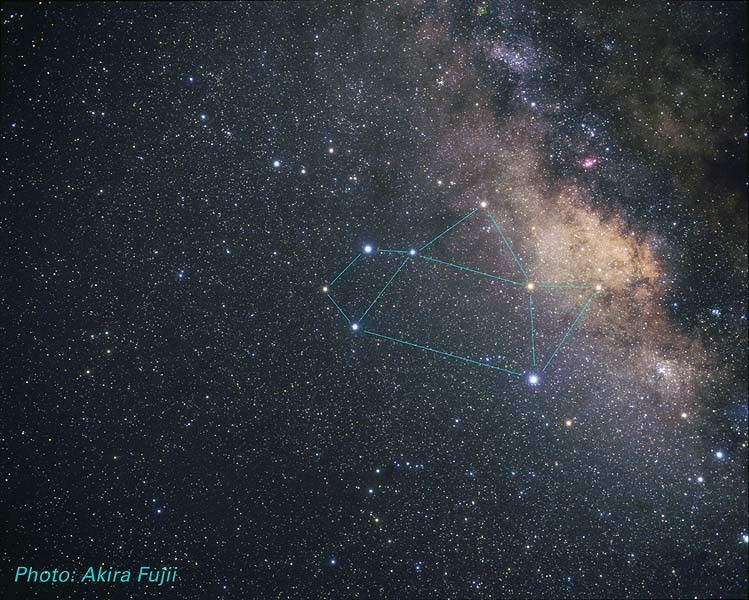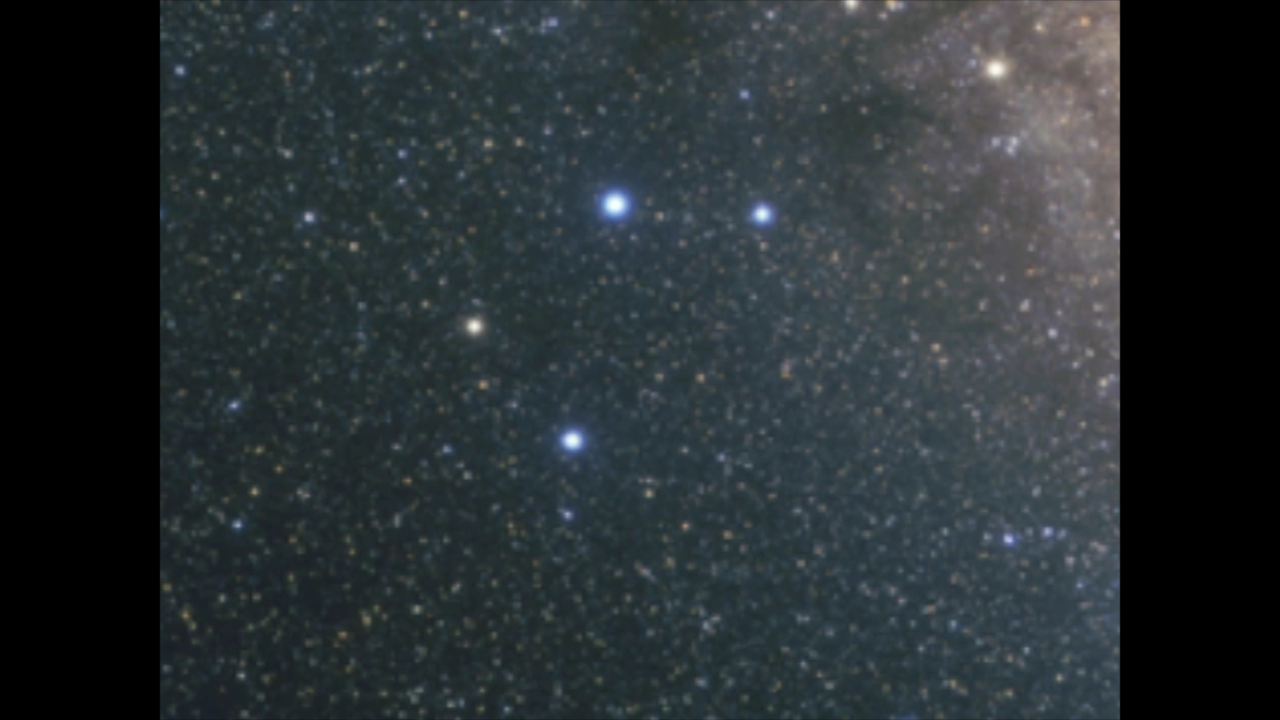1 min read
A Perfect Storm of Turbulent Gases in the Omega/Swan Nebula (M17)

Resembling the fury of a raging sea, this image actually shows a bubbly ocean of glowing hydrogen gas and small amounts of other elements such as oxygen and sulfur.
The photograph, taken by NASA's Hubble Space Telescope, captures a small region within M17, a hotbed of star formation. M17, also known as the Omega or Swan Nebula, is located about 5,500 light-years away in the constellation Sagittarius. The image is being released to commemorate the thirteenth anniversary of Hubble's launch on April 24, 1990.
The wave-like patterns of gas have been sculpted and illuminated by a torrent of ultraviolet radiation from young, massive stars, which lie outside the picture to the upper left. The glow of these patterns accentuates the three-dimensional structure of the gases. The ultraviolet radiation is carving and heating the surfaces of cold hydrogen gas clouds. The warmed surfaces glow orange and red in this photograph. The intense heat and pressure cause some material to stream away from those surfaces, creating the glowing veil of even hotter greenish gas that masks background structures. The pressure on the tips of the waves may trigger new star formation within them.
The image, roughly 3 light-years across, was taken May 29-30, 1999, with the Wide Field Planetary Camera 2. The colors in the image represent various gases. Red represents sulfur; green, hydrogen; and blue, oxygen.
About the Object
- R.A. PositionR.A. PositionRight ascension – analogous to longitude – is one component of an object's position.18h 20m 46.15s
- Dec. PositionDec. PositionDeclination – analogous to latitude – is one component of an object's position.-16° 09' 26".69
- ConstellationConstellationOne of 88 recognized regions of the celestial sphere in which the object appears.Sagittarius
- DistanceDistanceThe physical distance from Earth to the astronomical object. Distances within our solar system are usually measured in Astronomical Units (AU). Distances between stars are usually measured in light-years. Interstellar distances can also be measured in parsecs.About 5,500 light-years (1690 parsecs)
- DimensionsDimensionsThe physical size of the object or the apparent angle it subtends on the sky.The image is roughly 1.9.arcminutes (3.1 light-years or 0.95 parsecs) across.
About the Data
- Data DescriptionData DescriptionProposal: A description of the observations, their scientific justification, and the links to the data available in the science archive.
Science Team: The astronomers who planned the observations and analyzed the data. "PI" refers to the Principal Investigator.These data are from the HST archive proposal 6574 by J. Hester and P. Scowen (ASU), and R. Sankrit (JHU). - InstrumentInstrumentThe science instrument used to produce the data.HST>WFPC2
- Exposure DatesExposure DatesThe date(s) that the telescope made its observations and the total exposure time.May 29-30, 1999, Exposure Time: 3.4 hours
- FiltersFiltersThe camera filters that were used in the science observations.F502N ([O III]), F656N (H-alpha), F673N ([S II])
- Object NameObject NameA name or catalog number that astronomers use to identify an astronomical object.M17, NGC 6618, Swan Nebula, Omega Nebula
- Object DescriptionObject DescriptionThe type of astronomical object.Gaseous Nebula in the Milky Way Galaxy
- Release DateApril 24, 2003
- Science ReleaseHubble Captures a Perfect Storm of Turbulent Gases
- Credit

Related Images & Videos
Share
Details
Claire Andreoli
NASA’s Goddard Space Flight Center
Greenbelt, Maryland
claire.andreoli@nasa.gov


